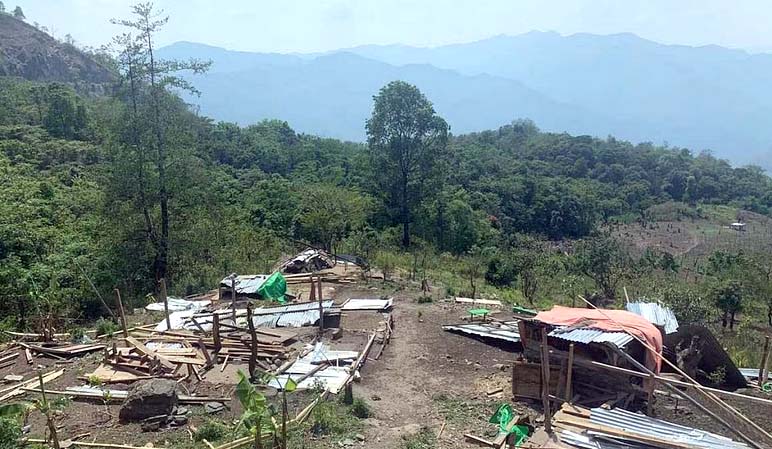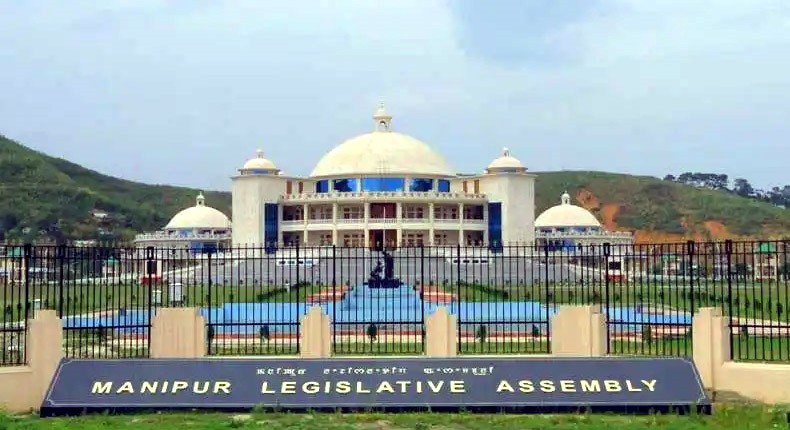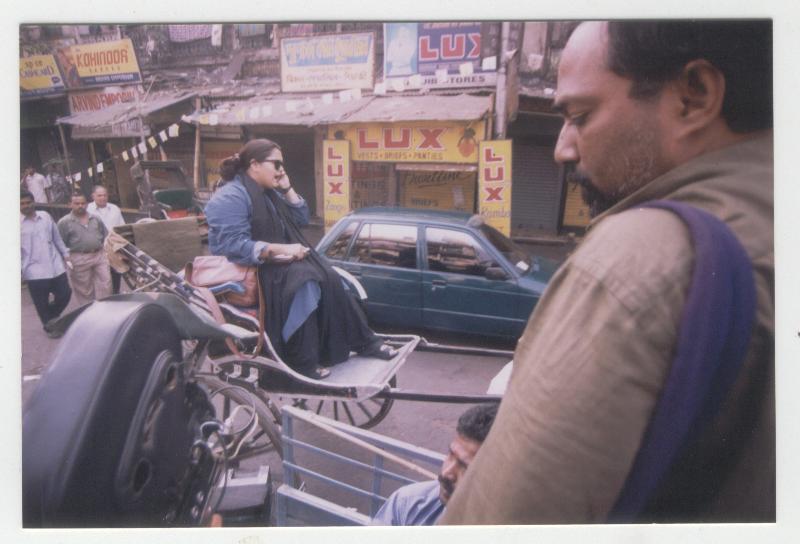Abstract
Writing and representing prolonged conflict faithfully in journalistic or scholastic writings is never easy. This is true for actual subjects of the conflicts writing of the conflicts, or observers from outside these conflict theatres assessing the conflicts. While the former are prone to the condition of ‘fidelity to trauma’ leading to victimhood, the latter can either end up ‘numbing empathy’, or else in cases of unchecked empathy, suffer from ‘surrogate victimage’.[i] Objectivity is necessary but often this also tends to be confused with objectivism. The recommendation in conflict and trauma representation is to find the ‘middle-voice’[ii]. This article will critique an ‘insight’ essay published in EPW in its August 3, 2024 issue which is more inclined to the former condition of ‘fidelity to trauma’ and victimhood, with the desired ‘middle-voice’ barely audible. The resort therefore is often to resurrect complaints of victimisation in the past which had been clarified, debated or resolved, but unfortunately after silencing these clarifications and debates which put the complaints in perspective.
Keywords:
Reserved forest, protected forests, poppy menace, eviction, set aside, satellite images, developmental funds, autonomy
The article Selective Outrage, Selective Targeting: The Politics of Othering in Manipur by Thongkholal Haokip, published in the Economic and Political Weekly, EPW, August 3, 2024 issue is well written but contains several subterfuges and partial representations of data to suit the writer’s preconception of an exploitative political structure in Manipur. However, these charges had been in the past either been officially clarified and publicised, but none of these, so also other counter arguments, find a reflection in this article.
The focus of the article is on three main issues: One, Government of Manipur’s allegedly biased drive against encroachment into Reserved Forests, RP, and Protected Forests, PF. Two, the state government’s alleged selective outrage in its fight against the menace of illegal poppy cultivation in the state. Three, the state government’s alleged brutish, insensitive and accusatory handling of “illegal” immigration from neighbouring Myanmar, casting damaging suspicions in public eye on a particular community in the state.
First the forest issue. I have been, since November 2018, a consultant in the Manipur chapter of an ambitious climate change related Indo-German watershed rejuvenation project in the Eastern Himalayas, funded by the German development bank, KfW, and implemented by the Manipur Forest Department, MFD, therefore have some background in Indian forest laws and the status of forest management in Manipur. In Manipur the project is christened Community Based Sustainable Forest Management for Water Resource Conservation, with an acronym COSFOM. The German consultancy group selected for this project is GFA.[iii]
Haokip’s first salvo is based on a question raised in the State Assembly by an MLA. From it he concludes: “For instance in the Department of Forests and Environment, proposal for 2017-2018 was 40.85 crore for hills, and 70.90 crore for the valley. The expenditure actually incurred was 19 crore for hills and 66 crore for the valley. This is a department where more than 90 per cent of the forests are located in the hills…” He however does not include the clarification made to correct this perception.
Even if the clarification was missed, what was expected was for the writer to have sought further information on this from the MFD before deciding to publish. He need not have worried of a valley bias in the MFD for the department has been headed either by a hillman or somebody from outside the state for the past 25 years, thanks to the reservation policy which has made Class-I services such as the Indian Forest Service, virtually out of reach for the non-tribal valley community, the Meitei. The forest portfolio in the ministry too has not been the monopoly of any particular community.
The first flaw in Haokip’s presumption stems from not taking cognizance of the fact that the forest administrative territorial divisions are not coterminous with district boundaries. Forests also overlap districts and do not distinguish between hills and valleys. Second, many segments of the hill districts, especially hillsides facing the Imphal valley are much easier accessed and administered from adjacent valley districts. Therefore, in matters of forest project implementation, these valley-facing hillsides are generally handled by forest divisions in adjacent valley districts.
This being so, if the writer had checked the list of forest projects for which funds were allocated to forest offices in valley districts, especially those in Bishnupur and Thoubal districts, he would have discovered that on the average 80 percent of their project sites are located in the adjacent hills. There could be corruption and poor implementation of these projects, but these are another matter, and even if these were to be so, it would have to be in booty sharing arrangements with the target villages, for there would be no way to divert the earmarked funds elsewhere.
Even the Indo-German project I am currently associated with is in the hands of the MFD headquarters in Imphal, and the project’s German consultancy firm GFA has its office in one of the MFD offices in Imphal, therefore its funds are clubbed in the Imphal West district forest office ledger. However, other than non-plan expenditures, such as salaries for staff and consultants, all partner villages are in the hills and all project investments are in these villages. As elsewhere, studying the accounts sub-ledgers within the ledgers is vital for a correct picture of overall expenditure destinations.
Lazy or else motivated campaign scholarships which resort to partial representation of data without putting them in the context of the larger dialectics which moderated them, can be damaging to any truth quest for they seek to keep false arguments perpetually current. Even this debate should have been put to rest long ago but gets repeatedly regurgitated and given fresh life through selective citations as the writer has done here.
It must be conceded the writer’s distaste of the noisy and brutish outbursts by those in power over forest encroachments, is legitimate. Execution of the law and its provisions, especially in sensitive matters, ought to be done without fanfare, but this is where the Manipur government has failed miserably. However, the claim that the villages evited from reserved forests, RF, and protected forest, PF, are targeted at one community only is not true. The writer also claims some of the evictions from PFs were done after the concerned villages had been “set aside”, therefore no longer part of these PFs. This is again false.
Here, a little elaboration on the provision of “set aside”, and together with it, the difference between RF and PF, would be helpful. No habitation is allowed within a reserved forest. Hence when a certain forest area is notified as a potential RF and there are claims of lands of villages overlapping with the proposed RF area, a settlement officer has to confirm the claim and then either “set it aside” so it is no longer inside the RF or else acquire the land after paying due compensation. By contrast, in a PF, human habitations are allowed within them so the question of “setting aside” does not arise. The thumb rule is, in RFs no human activities are allowed except those expressly permitted by forest authorities, and in PFs, all activities of existing villages within it are allowed, except those expressly prohibited by forest authorities, and these prohibited activities include setting up of new villages within the forest.
The writer does not mention which PF he was referring to when he talks of the government disregarding 38 villages in a PF already “set aside”, but it can be presumed he means the Churachandpur-Khoupum Protected Forest, for originally when this PF was notified on September 17, 1966, there were 38 villages within it. The notice of intent to have his stretch of this 499.06 sq. km. forested land was published on August 24, 1950. That is, the final declaration was made after 16 years of settlement surveys and negotiations.[iv] This PF is bounded by the Imphal valley to the east and Khoupum valley to the west, touching parts of Churachandpur, Noney, Bishnupur, Tamenglong and Kangpokpi districts.
In 1971, some forest authorities for unexplained reasons, officially “set aside” the original 38 villages within this RF, although as a PF there is no provision this measure. This unwarranted “setting aside” is what the government now seeks to declare infructuous and nullify. But the problem is more compound. Not only have the original 38 village were found “set aside” and therefore supposedly not within this RF anymore, but there has also been an exponential growth in the number of villages within it. The writer conflates the two, and makes it seem the eviction targets are the original 38 villages. This is not so.
If in September 1966 when this PF was declared, there were only 38 villages, now there are 191. It would have been 192, had it not been for the eviction of K. Songjang, a village which appeared on the satellite map in 2021, and its total of 15 households were evicted on February 20, 2023 after a 20-day notice. The village chief claims the village is not new and was an extension of another village, Kungpinaosen, two and half kilometres away and has challenged the eviction in the High Court where the case is pending. This information is from another detailed clarification made by the MFD [v], but Haokip’s article has no mention of it. Instead, he goes into a discussion on the principle of estoppel. Considering the facts of the case, it is doubtful if this principle can be applicable as the “setting aside” of the 38 villages were done not under any provision of law. Moreover, the 38 original villages will not be, and cannot be evicted even if their “set aside” documents are nullified by the court, but the article makes it appear this is intended.
The only uncertainty in the matter is the fate of the newly proliferated villages, many of which are no more than a few hutments, many more of them abandoned villages or else seasonally habited. However, since these villages came to be where they are out of the negligence of the government, the government should have to think of suitable compensations or resettlement plan if they are indeed to be evicted. One more interesting detail is, the MFD had completed surveying 24 of the 38 “set aside” villages before the current ethnic violence broke out and work came to a halt. Lands claimed by these 24 villages overlap considerably and together added up to 392.6 sq. kms., leaving only 106.46 sq.kms left of the original PF. Once the remaining 14 villages are also surveyed, because of the territory overlaps, on paper the “set aside” area is predicted to be larger than the original PF itself.[vi]
There are some more related issues which the article brings up designed to portray the existence of a targeted official aggression against a community. It however refrains from providing data to support the claims. Some of these missing data are, how many villages have already been evicted, and from which forest land? Equally, who are the targets of these evictions? Has there been a continuing declaration of more forest lands as RF or PF causing further trauma for a community?
Quite by coincidence, the Editors’ Guild of India, EGI, too had sent a supposedly ‘crowd funded’ team of three senior journalists to the state in 2023 to investigate the outbreak of ethnic violence in the state. After two and a half days of fact-finding investigation, the team came out with a controversial report, and it also used this same argument of the state government weaponizing RF and PF declaration to target the Kuki-Zo community.[vii] In response to the EGI’s charges, the Principal Chief Conservator of Forest, S.S. Chhabra, had in a signed official rebuttal clarified in detail the exact status regarding these matters.[viii] Nothing of this clarification again is reflected in the article.
On the eviction matter, the figures provided by the clarification gives a different picture. Between October 24, 2015 when the eviction drive began and April 18, 2023 when the last eviction took place, there have been a total of 413 houses evicted from 24 RFs. Except for a few, such as K. Songjang in Noney district, the rest are all in the valley districts. Community wise breakup of the evicted houses is: Kuki-59, Meitei-143, Meitei Pangal-137, Naga-38 and Nepali-36. This does not suggest any targeted victimisation. Recently, in the wake of the devastating floods in the Imphal area brought by cyclone Remal, there has been another eviction notice, but the target here are encroachers along river banks and other drainage facilities in the greater Imphal area.[ix]
On the claim of continued declaration of RFs and PFs, the clarification has some revealing figures. First there has been no recently declared RFs or PFs. The last RF was declared on January 4, 1990 and the last PF was declared on June 18, 1979. Again, a majority of the existing RFs and PFs of Manipur were declared while the state was either under the British, or else a Union Territory, therefore by decisions of the Parliament.
It also said the state today has a total of 37 RFs totalling 984.26 sq. kms, 23 PFs totalling 4171 sq. kms and over and above this there are also 11, 252 sq.kms (or 50.4 percent of the state’s forest area) classified under the Indian Forest Act 1927 as “Unclassed Forests”, UF. These are state forests but community owned and are almost exclusively in the Naga dominated districts. The pattern has been for RFs to be declared where there were no habitations at the time of declaration, PFs where there were sparse habitations, and UFs where forests already had claims of ownership by communities.
The RFs declaration in Manipur began as early as 1913, each one by separate orders of the Manipur State Darbar, of which the president was the British Political Agent.[x] After Manipur merged with India on October 15, 1949, these notified RFs were merged and absorbed into the Indian Forest Act 1927, but some peculiarities of colonial period RFs like allowing settlements within them were retained in these colonial period RFs.[xi]
Of Manipur’s 37 RFs, 21 “were notified by the President, Manipur State Darbar (a British officer) from 4.8.1913 to 7.8.1946, one by the State Council on 22.4.1948, eight by the Chief Commissioner from 1.8.1951 to 13.9.1971”. After Manipur was upgraded from a Union Territory to a full-fledged state, it declared seven more RFs. Likewise, of the “23 Protected Forests in the State, 17 were notified by the Chief Commissioner from 21.11.1951 to 17.1.1970 and the remaining six by the State Government”. Haokip’s article is silent on these telling details as well.
The second major thrust area in Haokip’s portrayal of a selective outrage and targeting of a community is in the Manipur government’s war against drugs, and as part of it, the drive against the new menace of poppy cultivation. This menace is indeed huge, as a widely reported findings of the Manipur Remote Sensing Application Centre, MARSAC, indicates.[xii] MARSAC which has the service of three remote sensing satellites, confirmed that poppy cultivation in the state has declined after the ethnic violence broke out on May 3, 2023. From 16,632.29 acres in 2022-2023 it has reduced to 11,288.07 acres in 2023-2024.
Considering opium yield per hectare poppy field is estimated at about 4.4kg and farmgate price of this psychotropic substance in the black market is between Rs.60,000 and Rs. 1 lakh per kg, the total annual turnover from poppy cultivation is estimated to be between Rs.100 crore and Rs.200 crore. This is a very conservative estimation and some put the figure much higher. This being so, without the strong arms of the law, combined with offers of alternative livelihood means, it is unlikely to be easy to wean away farmers who have taken to this illegal crop. It goes without saying that a distinction would have to be made between the farmers and drugs kingpins in the underworld network. It is also equally likely that those running this network are not restricted to any community, though some may be more deeply involved.
The MARSAC report also says the districts most prone to the crop are Kangpokpi and Churachandpur, two Kuki-Zo dominated districts. It must however be added that Pherzawl district, dominated by Hmar tribe, also of the Kuki-Zo group, is completely clean of the crop in these MARSAC satellite images. The broad picture that emerges is, Kuki-Zo tribes are more prone to this crop than Naga tribes amongst whom the prevalence of this crop is negligible. Ostensibly, in his eagerness to paint a picture of hill-valley binary where the hills are at the receiving end, the writer uses the broad brush and camouflages this difference in outlook between the different hill communities. He therefore sees this proneness to the poppy crop in the hills as only a result of poverty induced by state deprivation. But to see the poppy culture solely as structurally determined is not accurate. Agency also plays a big part, as demonstrated by the fact that Naga hill villagers generally stay away from the crop while Kuki-Zos are more susceptible. Unfortunately, false diagnoses such as this, are destined to make effective remedial measures elusive.
This difference in outlook between different hill communities is probably determined by the stability of each’s customary economic practices. Nagas traditionally are a combine of sedentary farmers and hunter-gatherers. Their villages do not proliferate therefore are large, averaging 100 to 200 household, but some touch the 1000 mark. The villagers jointly own their villages and are deeply attached to them, so much so that banishment from village is considered a very severe penalty.[xiii] By contrast, Kuki villages are generally very small, though there are large and well-settled ones in the flatlands on edges of the Imphal valley as well as other river basins. They can be as small as two or three households, and villages are owned by their chiefs while the villagers are his tenants. Prominent villagers therefore tend to leave and start their own villages, resulting in constant multiplication of the community’s villages. The result is also general economic instability.[xiv] Their proneness to lucrative cash crops like poppy probably is also heightened by this instability.
The case of Churachandpur-Khoupum PF discussed above is one evidence of this village proliferation. Another small 31.08 sq. km RF, the Khamenlok-Gwaltabi Reserved Forest, on the eastern edge of the Imphal valley is even more illustrative.[xv] This RF was notified in 1946 by the President Manipur State Darbar. At the time of this notification, there were seven villages within this RF. These were one Tangkhul village, one Maring village, one Kom village and four Kuki villages. After the bloody Kuki-Naga conflict of the 1990s, the Maring village left the area so there ought now to be just six village in the area, but there are 49. The increment is exclusively on account of proliferating Kuki villages.[xvi]
Without any value judgement, and after acknowledging every community should be free to proudly practice their customary ways of life, there will have to be a caveat. The modern state is premised on a sedentary and enumerable population. If this condition were not to be so, governance would become complicated and difficult, if not impossible. Social frictions would also become a foregone conclusion. This indeed is also one of the factors behind the current multi-faceted frictions over forest encroachments, poppy menace and “illegal” immigration issue. Frictions from shifting population was also the trigger in the Naga-Kuki conflict of the 1990s, which began with the United Naga Council, UNC, serving quit notices to Kuki villagers they claimed were encroachers in their territory.[xvii]
This friction between sedentary and non-sedentary populations is ancient as Anthony Sattin points out.[xviii] Sattin sees metaphors to this effect in mythologies, such as of Seth and Osiris of the Egyptians, or the characters in Homer’s Odyssey, but most interestingly, in the first murder in the Bible where the sons of Adam and Eve, Cain kills his brother Abel. Cain, interestingly is a tiller of the soil, and Abel a wandering shepherd. In these mythologies, depending on who gets to tells the story – the sedentary or the wandering population – the others would be the monsters or demons. But this is the era of the modern state which is premised on a sedentary population.
Another allegation consistent throughout the article is that the majoritarian government in Imphal favours the valley and deprives entitlements of the hills to be diverted to the valley. The writer is right that Manipur is a deficit state, and has to depend on the Centre for grant support as a special category state like the other Northeast states. The state’s annual budget estimates average around Rs. 35,000 crores and of this, the state’s own tax and non-tax receipts total just about Rs. 4,000 crores. After COVID and then the current ethnic crisis, this figure has now dipped below the Rs.3,000 crores mark. Even with the state’s share of central taxes added to this, the total is still far short of its budgetary requirements.
Again, of the approximate Rs. 35,000 crore annual budget, its non-plan expenditures like salaries, pensions, loan servicing, interest payments, maintenance of existing infrastructures etc., total close to 70 percent. Almost all of these non-plan expenditures are clubbed into the valley ledger as most of the government departments headquarters are in Imphal in the valley. A closer look within the ledgers in the Demands for Grants at Assembly Budget sessions each year also reveals a picture different from what the covers suggest. Account heads like police, transportation etc., except for departments meant specifically for the hill districts and located there such as the Autonomous District Councils, are simply clubbed under “valley”.[xix]
After subtracting the non-plan fund, what is left for plan investment is about Rs. 10,000 crore to Rs. 12,000 crore a year on the average. There have also been a White Paper brought out on this by the Government of Manipur in the face of persistent allegations. According to this White Paper, the plan fund expenditure in the hills in 2020-2021 for instance was 45.75 percent.[xx] This roughly corresponds with the demography of the state, not the land area differential as Haokip and others insist developmental funds distribution should be based on.
There are differences in pace of development of the valley and the hills, but is this out of differences in ‘road friction to development’ as James C. Scott characterises. Scott’s portrayal of the evolution of “Paddy States” of yore in valleys in upland South East Asia, and their frictions with the “non state bearing” populations in surrounding hills is also illustrative in this regard.[xxi] Or is this disparity on account of majoritarian discriminatory politics of the valley. What must also be taken note of here is the fallacy of comparing a district headquarter or village in the hills with Imphal city as illustration of this disparity. A more realistic comparison would be between villages in the hills with villages in the valley, and in all likelihood, there would be little or no difference between them, except for the fact that the villagers in the valley can monetise their land holdings or mortgage them to take advantage of modern financial institutions, whereas the villagers in the hills cannot do this because no modern land revenue laws are followed or welcomed here. These matters need to be studied more closely and honestly if an effective remedial measure and way forward is to be found.
The article’s suggestion that the present BJP government and its leader the chief minister, N. Biren Singh, should tone down their insensitive accusatory tone in dealing with the present crisis in the state, would meet little or no resistance from any community. Its call for a more elaborate power devolution mechanism to give more autonomy to the hills is now beginning to be received more favourably. This could be modelled on the 6th Schedule Autonomous District Councils, and this was indeed agreed upon by a past government if local adjustments were made.
This local adjustment is essential, for the valley community Meiteis too are equally insecure, and suffer from a sense of siege, given the size of the valley which is their home, and that everybody can buy and settle here but they are prohibited from doing so in the hills. They also now feel threatened they would be overwhelmed demographically as well as in the job market because they are considered non-tribals and have to compete in the general category without any positive discrimination like the other traditional communities in the state. If more autonomy and institutional protection are thought for the hills, then the valley also should be made entitled to similar protections to bring a sense of balance.
Furthermore, the third major stakeholders, Nagas, should not be forgotten or broad-brushed into a supposedly homogenous hill community, for this is far from reality. If a peace model is deemed to rest on autonomous territories for the different communities, since the Kuki-Zos are spread thin in practically all the districts, much of the land they are now settled in the hills are claimed by the Naga as originally theirs. Marking out territories for Kuki-Zos hence is replete with another conflict potential. Nothing happens in a vacuum and conflicts are action-reaction clashes of interests. Let it not be forgotten that it is the existence of parallel narratives of marginalisation which created the condition for a single spark to ignite an inferno on May 3, 2023, in Manipur.
A slightly edited version of this article was first published in Economic & Political Weekly. The original can be read HERE
Notes and references
[i] Dominick LaCapra, Writing History, Writing Trauma, (The Johns Hopkins University Press, 2001), p.39,40.
[ii] Ibid
[iii] See https://www.gfa-group.de/news/FOREST_MINISTER_LAUNCHES_OFFICIAL_COSFOM_PROJECT_WEBSITE_IN_MANIPUR_3954904.html (last accessed August 7, 2024).
[iv] Facsimile copies of all the original notifications for declaring RF and PF have been compiled and published in book form.
[v] Copies of these clarifications are still available in media offices and at the MFD headquarters.
[vi] Notes on records at the MFD
[vii] https://editorsguild.in/fact-finding-mission-report/#:~:text=The%20team%20visited%20Manipur%20from%20August%207%20to%2010.&text=The%20Editors%20Guild%20of%20India,ethnic%20violence%20in%20the%20state. (last accessed August 10, 2024).
[viii] Memo of the Office of the Chief Conservator of Forests & HoFF, Memo No. 22/33/2023/Forest, Dated 6th September 2023
[ix] https://easternmirrornagaland.com/manipur-announces-major-eviction-drive-to-prevent-frequent-flooding/ (last accessed August 7, 2024).
[x] Manipur was not annexed by the British but kept as a Protectorate State, therefore the British had only a political agent not a governor there.
[xi] Merged States (Law) Act, 1949, which came into force from January 1, 1950
[xii] See https://indianexpress.com/article/india/manipur-poppy-cultivation-decrease-over-past-4-years-report-9426705/ (last accessed August 7, 2024).
See also https://www.ndtv.com/india-news/exclusive-end-of-opium-poppy-farming-in-manipur-soon-marsac-data-using-satellite-imagery-indicates-so-5439079/amp/1 (last accessed August 7, 2024).
[xiii] Jelle JP Wouters has done a profile of the Naga village https://www.southasianist.ed.ac.uk/article/view/1853 (last accessed August 10, 2024).
[xiv] See https://www.epw.in/journal/2017/34/commentary/kuki-chieftainship-democratic-india.html
[xv] Reserved Forests and Protected Forests of Manipur, a compilation of facsimile copies of all notifications declaring RFs and PFs as well as proposed RFs and PFs, published as a volume by the Manipur Forest Department.
[xvi] Records maintained by the Manipur Forest Department.
[xvii] See https://www.e-pao.net/GP.asp?src=4..250806.aug06
[xviii] Anthony Sattin, Nomads: The Wanderers Who Shaped Our World, (Hachette UK, 2022)
[xix] Deduced from the compilation of the Demands for Grants of the Government of Manipur for 2021-2022, published in book form by the Assembly Secretariat
[xx] Government publication titled “Report of the committee constituted by the Government of Manipur to examine the funds released for all the hill districts in the state, Dated: October, 2021” which was also reported widely in media including outside the state. See https://nagalandpost.com/index.php/2021/10/28/manipur-govt-spends-45-75-on-hill-districts-report/ (last accessed August 7, 2024). See also https://www.ifp.co.in/10636/manipur-government-brings-out-white-paper-on-funds-released-to-hill-districts (last accessed August 7, 2024).
[xxi] James C. Scott, The Art of Not Being Governed: An Anarchic History of Upland South East Asia, (Orient Blackswan, India, 2013)












